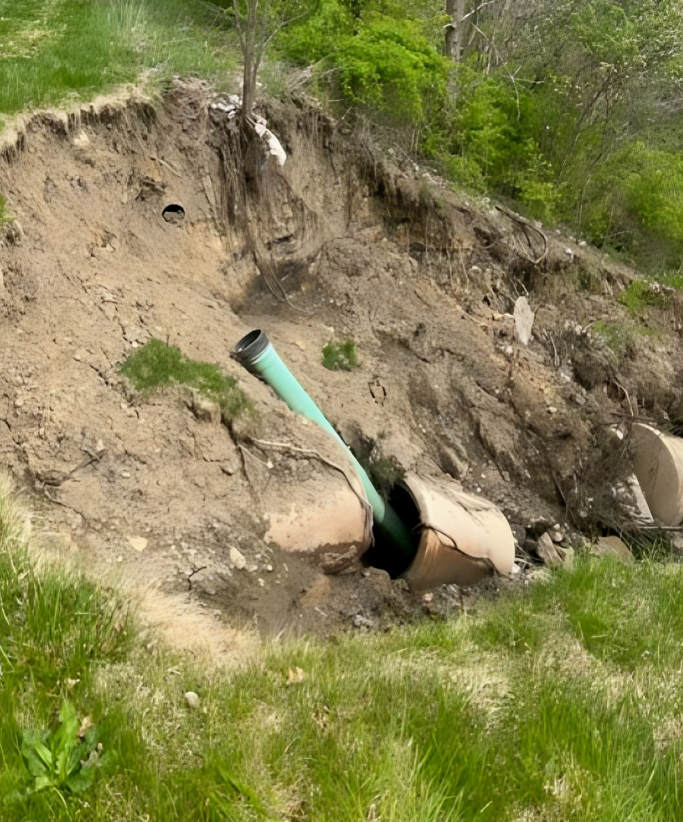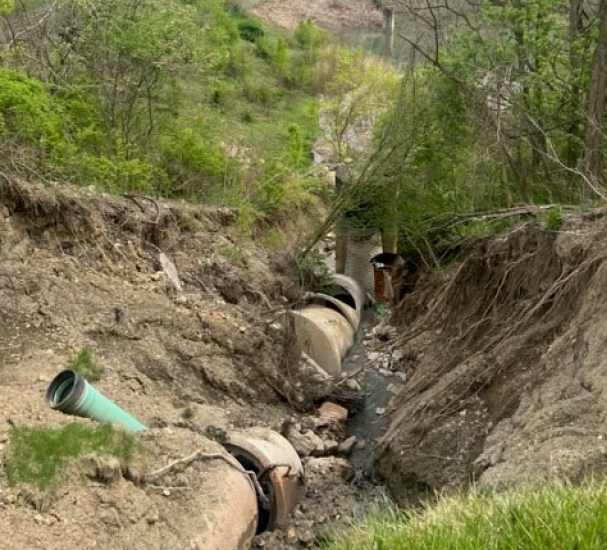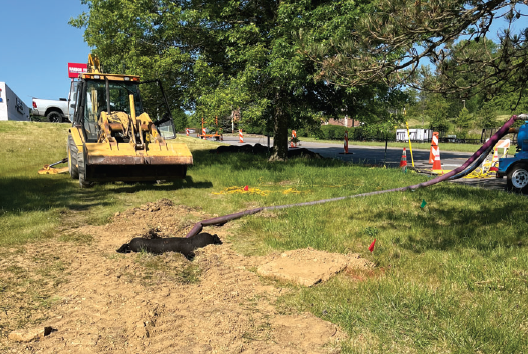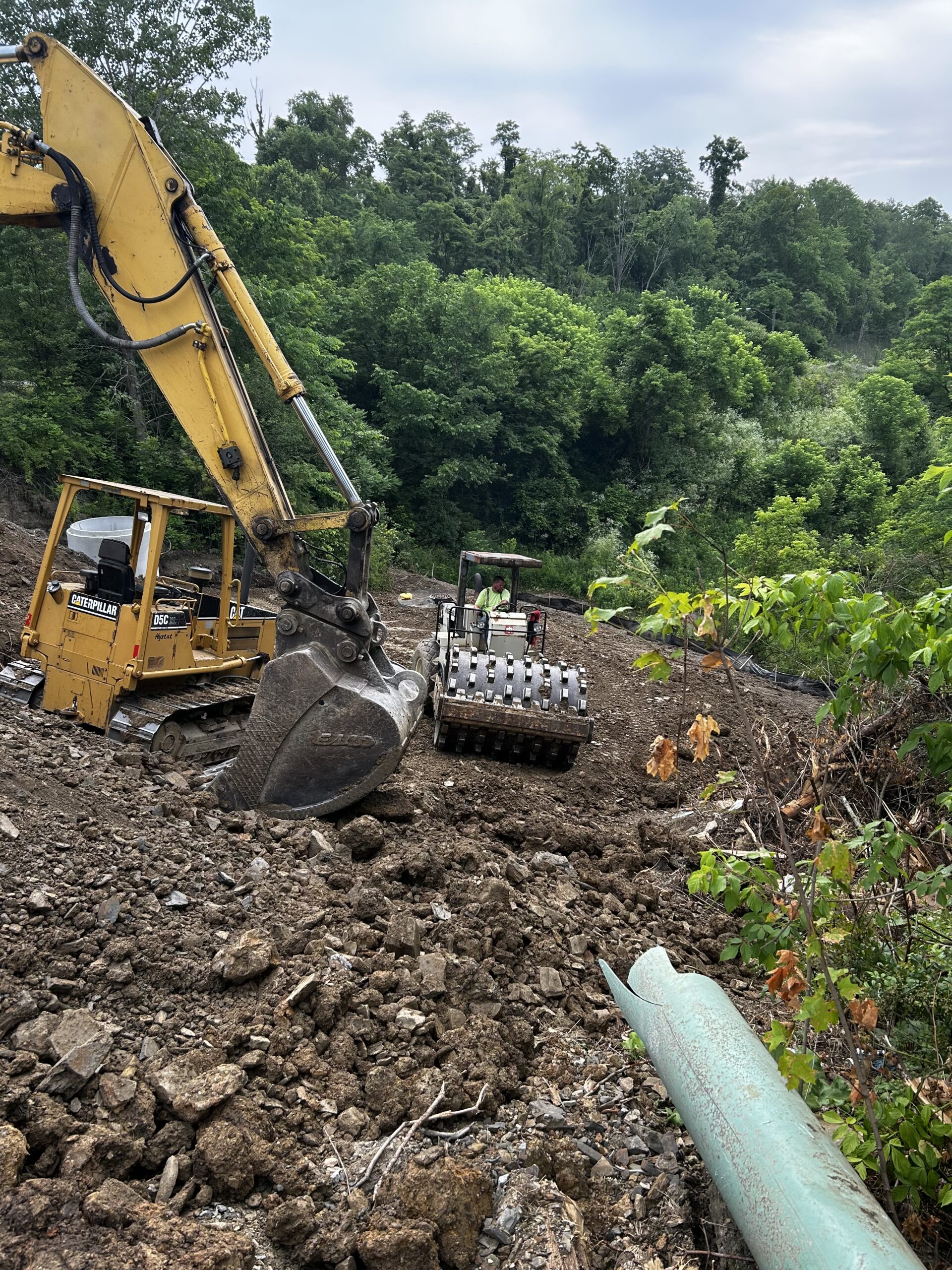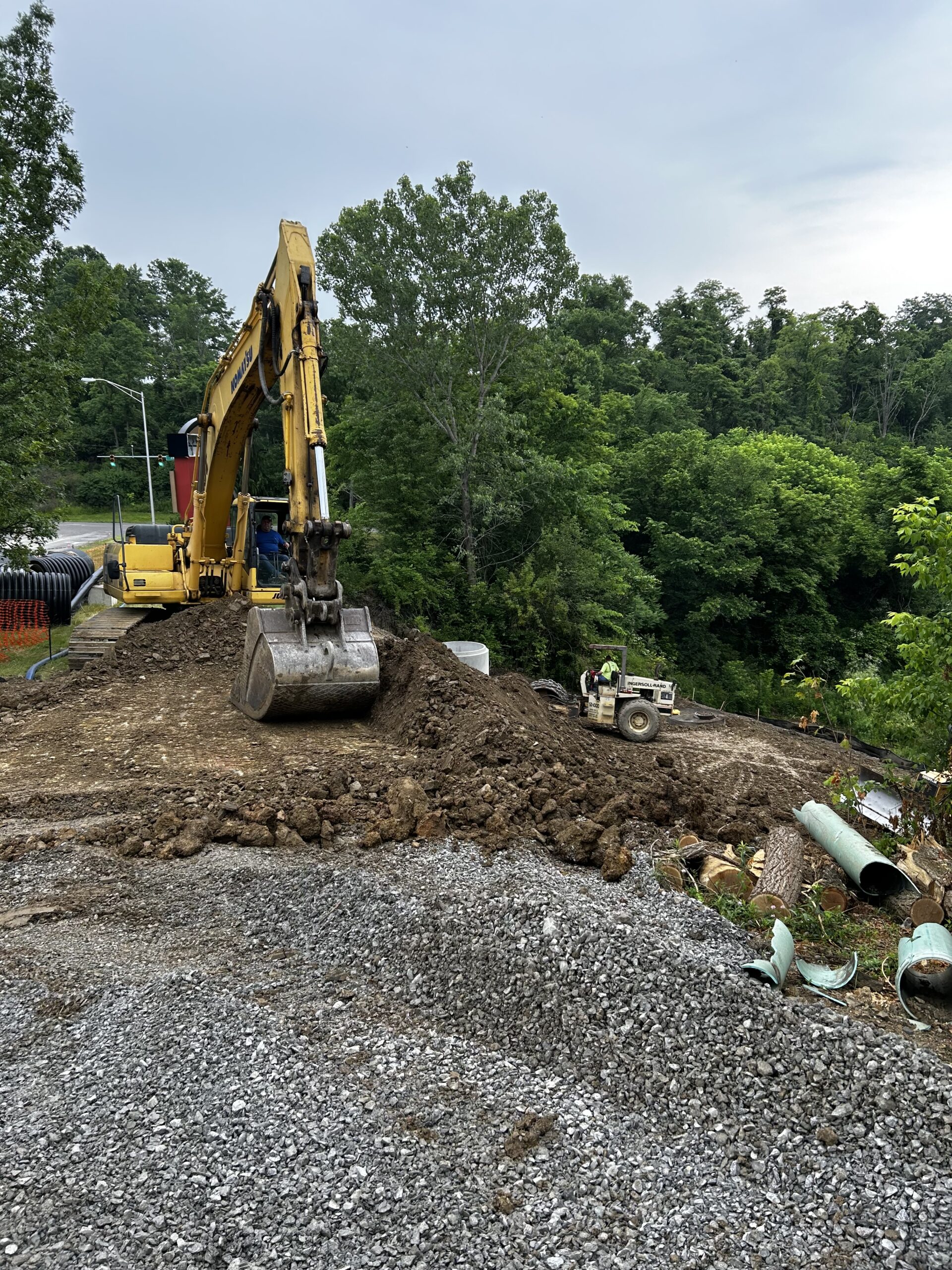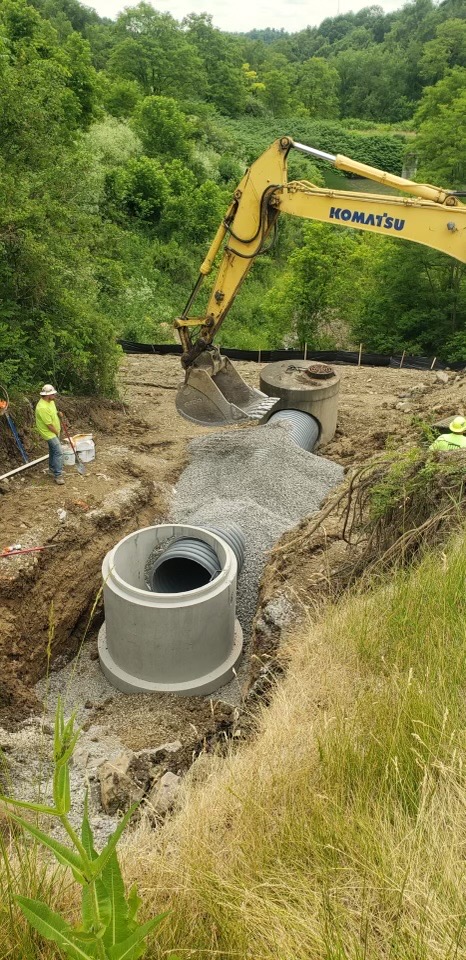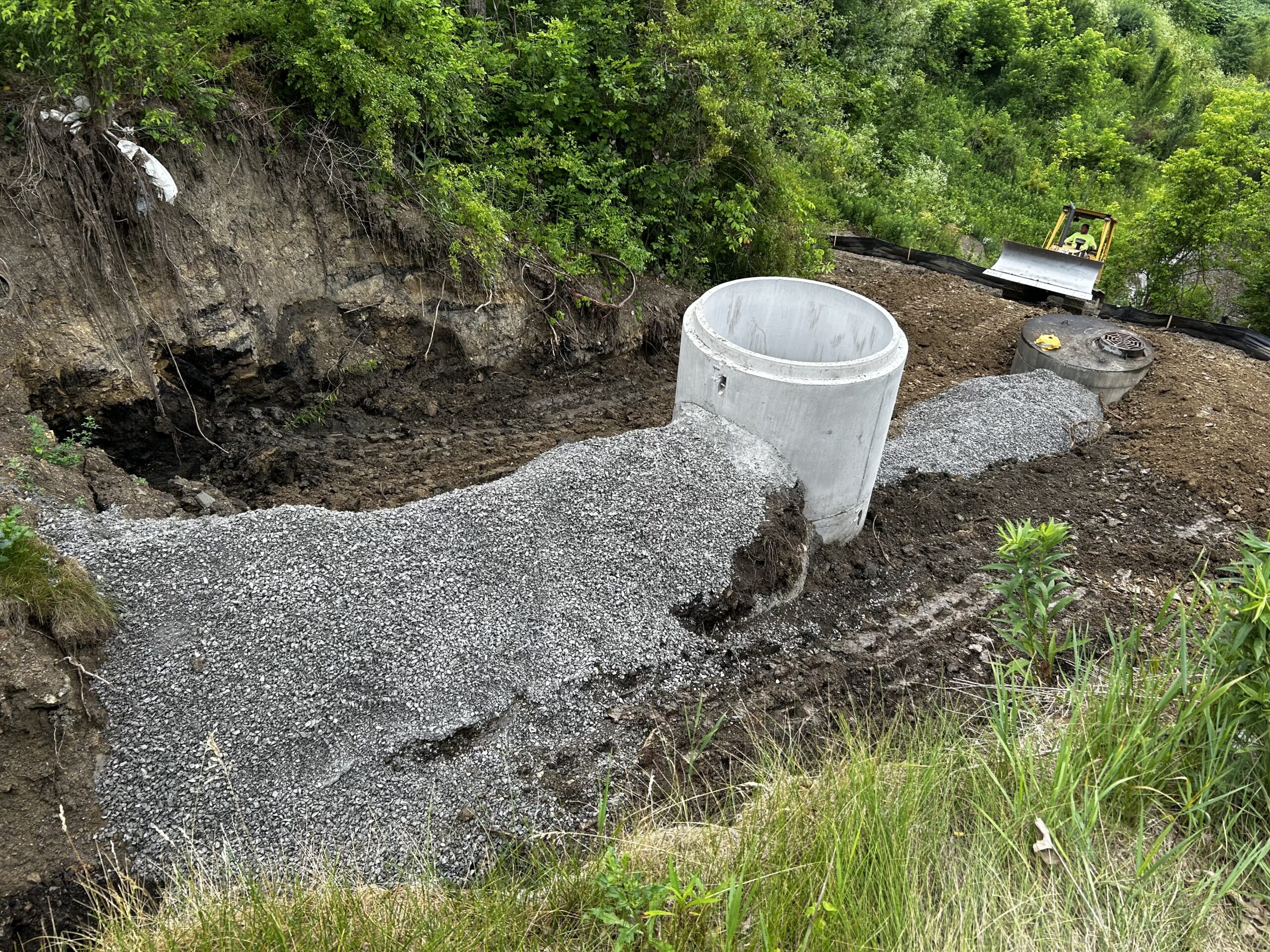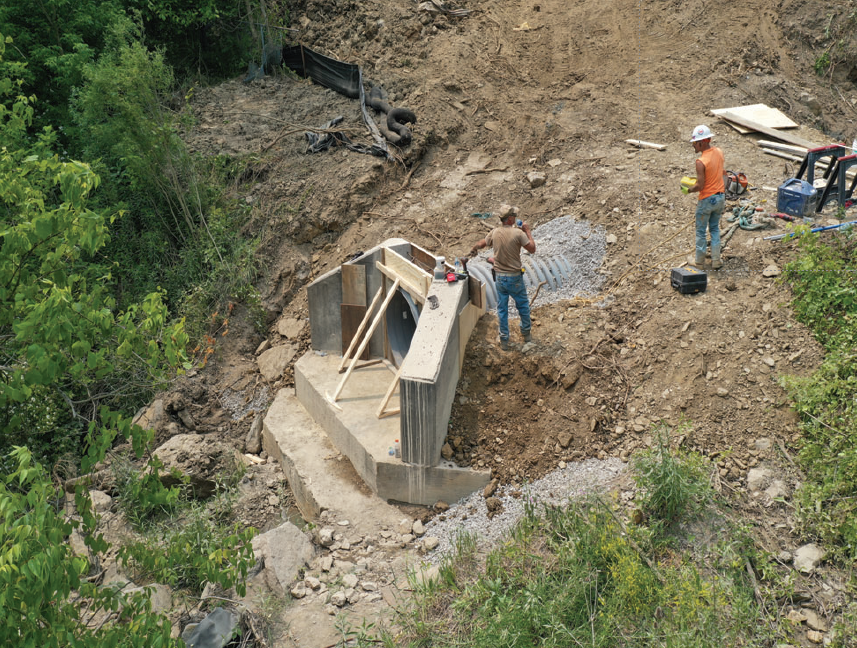Steubenville, Ohio Slope Collapse
Steubenville, Ohio |
Retail |
Stormwater System Repairs - OLD
Overview:
The stormwater pipe on this property failed leading to a catastrophic sinkhole that affected a nearby wastewater line. Quick, efficient work was of the upmost importance to repair both pipelines, the sinkhole and surrounding area.
Problem:
This property had a steep hill at the end of the parking lot that drained to a retention pond below. The underground stormwater system conveyed water from the parking lot to the catch basins and then underground to the retention pond. The underground stormwater system, responsible for conveying water from the parking lot to catch basins and then to the retention pond, had suffered damage over time. Years of intense rain events and high-water flow led to the failure of the stormwater pipe. Separations in the pipe allowed for sediment from subgrade outside the pipe to rush into the pipe, creating voids or holes on the surface level. This process accelerated with rapid water flow, eventually impacting the upstream pipeline, junction box and the nearby wastewater pipeline. As the sinkhole grew, it compromised the wastewater line which ran perpendicular to the stormwater line and slope. The sanitary line was soon compromised by the soil collapsing and broke, allowing waste to flow downhill and into the retention pond.

Before
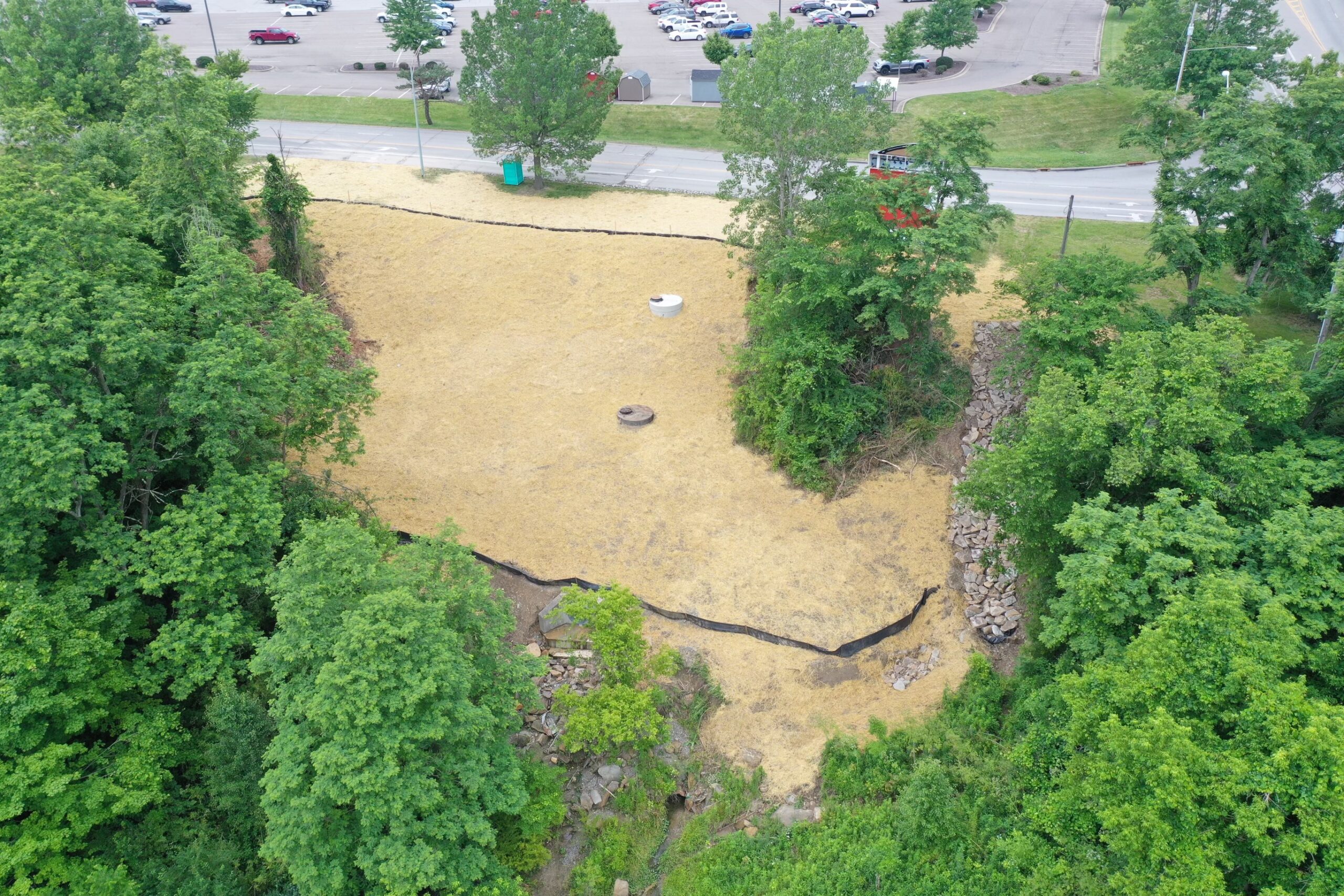
After
Solution:
The sinkhole expanded causing the broken pipelines to flow freely into the retention pond, creating a health hazard. AQUALIS acted quickly, plugging both pipelines temporarily and implementing bypass lines and pumps for accurate inspection. Pipe inspection is done by a small robotic camera called CCTV that traverses inside the pipe, recording the interior condition. Deploying CCTV to assess the damage in the stormwater pipeline, AQUALIS found the upstream pipes were fortunately unaffected by the collapse and therefore did not need to be replaced or repaired.
The property’s original design incorporated junction boxes to create steps in the pipeline to account for the severity of the grade from the parking lot to the retention pond. Shorter sections of pipeline are connected by junction boxes that allow for significant change in elevation without dramatic pipe slopes. This is done to avoid slopes that accelerate the velocity of water. Increased velocities exacerbate existing issues more quickly than normal or reduced flow. On this site, a section of pipe between two junction boxes failed. Once the sinkhole appeared, the downstream infrastructure was directly affected. With excess water no longer contained in the pipeline, the water rushed along the slope washing out sediment and the lower pipe sections. Erosion is an exponential problem and will worsen quickly. With combined flow now released down the slope, washout was significant.
Once the water from the pipelines was diverted, the next step was chemical testing as the wastewater had potentially contaminated the water and soils in the area. Once the samples were evaluated, the contaminated materials could be properly disposed. The contamination did not reach the retention pond below, eliminating the need for significant remediation of the pond.
The bypass lines had to be buried to allow for heavy machinery to access the site. Then, excavation could begin. Using heavy machinery, AQUALIS removed loose soils, damaged pipeline and junction boxes. Junction boxes are precast structures that are installed to allow for change in direction, elevation and various pipe sizes. The stormwater pipe was originally corrugated metal pipe (CMP) which has a shorter lifespan and is prone to rust and corrosion. Downstream, at the outlet at the end of the pipeline, a headwall was originally installed to prevent erosion. Headwalls are concrete structures cast around inlets and outlets to act as a barrier or retaining wall. At this site, the backfill behind the headwall had washed out from the high-velocity flow. The headwall was still intact, but the pipe inside was replaced. The CMP was replaced with longer lasting high-density polyurethane (HDPE) pipe.
The collapsed manhole was replaced with a new precast structure. Pipe bedding was laid to reduce the load on top of the new pipeline. A total of sixty linear feet of stormwater pipe was replaced to connect the upstream system to both junction boxes and finally the outfall. Interior and exterior connections were sealed with concrete collars and hydraulic mortar.
Confined Space Entry Personal (CSPE) entered the pipe to manually inspect any potential weaknesses or voids. Twenty- eight linear feet of the wastewater pipeline also had to be replaced. Once it was determined the pipelines were effectively repaired, temporary best management practices, including water diversions and bypass lines could be removed.
Because of the erosion, the area required backfilling to repair the hillside to original site design. Once the grade of the slope was restored to original design, AQUALIS laid seed and erosion control matting to stabilize the area. Over time, vegetation will return to the area to naturally and permanently stabilize the soils.
Severe rain events are often the catalyst of failures in stormwater systems. Some municipalities require inspections during qualified rain events as this is when failures are most likely to occur. It is crucial to inspect your system regularly to ensure it is functioning properly. Call AQUALIS today to schedule your stormwater or wastewater inspection.
 Kenosha, Wis. Highway KR Regenerative Stormwater ConveyanceThe Root-Pike Watershed Initiative Network Kenosha County, and others worked with AQUALIS to design and implement an innovative solution for stormwater control along Highway KR.
Kenosha, Wis. Highway KR Regenerative Stormwater ConveyanceThe Root-Pike Watershed Initiative Network Kenosha County, and others worked with AQUALIS to design and implement an innovative solution for stormwater control along Highway KR. Durham, N.C. Sinkhole Leads to Stormwater System RehabilitationThe tenant on this property noticed a depression that opened to the ground below and notified the property owners.
Durham, N.C. Sinkhole Leads to Stormwater System RehabilitationThe tenant on this property noticed a depression that opened to the ground below and notified the property owners.

